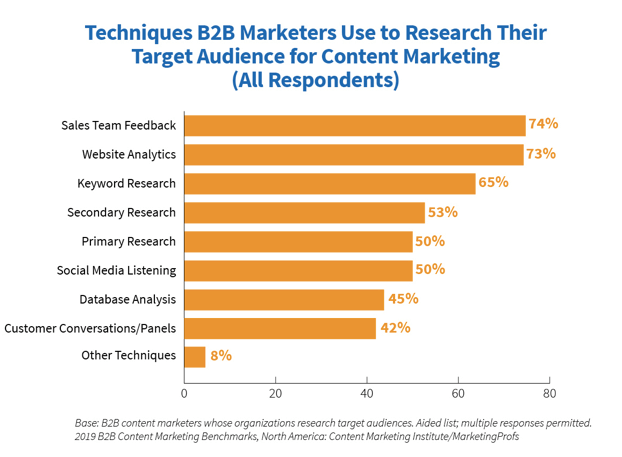Connecting to buyers with empathy in marketing
July 21, 2020Empathy isn't a marketing strategy, it's building an emotional connection.
Marketing technology enables you to better connect with buyers, but it is a double-edged sword. It gives marketers insight into consumers’ buying preferences, but it also tends to turn customers into datasets instead of actual human beings. When brands lose touch with their customers as people, it’s impossible to empathize with them.
Empathy is more than just the latest marketing buzzword, it’s the foundation of a customer-centric organization. Buyers and consumers want to be seen as more than just end-users of your products, they want to be recognized, understood, and valued as people. Empathy is the key to understanding the buyer’s entire journey—their physical, mental, social, and emotional needs.
For customers, empathy breeds trust, and trust is at the heart of a loyal brand relationship. This should be elementary for marketers, so why do so many brands fail the empathy test?
Listening is a lost art
As it turns out, most marketers have never had a conversation with their prospects or customers. The 2019 Content Marketing Institute B2B report showed that just 42% of marketers are listening to their customers. They’re drowning in data—website analytics, data analytics, SEO analytics, even social listening—but they have no idea what their customers really think or feel.

Data is important, but it’s not a good basis for developing empathy. When you don’t talk to your customers, you miss out on the emotional nuances of the buying decision—their hopes, buying triggers, frustrations, goals, and mental pain points. When you listen to someone, you go beyond the facts to get
Marketer bias
The Journal of Marketing Research published a fascinating paper pointing to the effect of marketer bias on empathy. The researchers gave marketing managers an empathy prompt and then asked them to predict customer preferences. Unsurprisingly—or surprisingly, depending on your perspective—the marketers were more likely to say their customers’ preferences were the same as their own.
To make matters worse, when they were shown market data revealing their customers’ actual preferences, the marketers tended to mistrust the research, believing their own judgment over empirical data. Instead of thinking “What does my customer want,” the marketers were more apt to think, “What would I want if I were the customer?”
It’s a subtle but important distinction. It’s not empathy if you replace the customer with your own emotions and preferences; marketers need to be able to put themselves in the customers’ shoes to connect with them on a personal level and convey that connection across all types of communications and touchpoints.
“Empathy-washing”
An article by the American Marketing Association describes a phenomenon known as “empathy-washing,” which happens sometimes when brands attempt to use empathy in marketing. Empathy-washing is when a brand takes an insincere or hollow approach to an issue that matters to its customers with the goal of showing empathy. And it doesn’t turn out well, to say the least.
Belinda Parmar, CEO of The Empathy Business, says empathy has to be part of the culture of the company before a consumer will believe it. It’s not enough to change the marketing language, the company needs to change the way it operates from the inside out—it needs to “become more human” to succeed with empathy marketing.
Developing your empathy superpower
The good news is that marketers are human, too, so developing empathy for your customers isn’t as difficult as it sounds. Michael Brenner, CEO and founder of the Marketing Insider Grou

Listen and observe
Empathy doesn’t grow organically from dry survey data, so you can’t rely on data to develop emotional connections. You need to listen to what your buyers have to say. How to best do this? Listen in on calls with your sales and customer service teams. Hop on a Zoom call and “meet” your customers, partners, and even try to talk to opportunities that didn’t actually purchase from you. You are seeking insights to help you understand how to help them better.
Keep in mind that most people don’t listen with the attempt to hear and understand—they listen so they can formulate a reply. That’s not the mindset you need when you’re listening to develop empathy. Listen deeply and ask open-ended questions.
Create conversations, not campaigns
If you want to avoid empathy-washing, your marketing efforts can’t be perceived as pushing your products or an agenda. People are intuitive when it comes to brand motivations; they know when they’re being manipulated.
Feelings and actions go hand-in-hand; the Latin word
Be helpful
Empathy in marketing isn’t something you do to your customers, it’s something you should have for them. That means partnering with them to help them achieve their goals. Too often, when a customer says, “I need to solve a problem,” the marketer hears, “You need a solution.” But it’s rarely as simple and linear as that. You can’t help your customer solve a problem unless you really understand what it is and how he or she wants to fix it.
Customers need helpful, useful product information and content that guides them to the next best step on their purchase journey. When you’re developing product content, use empathy to create assets that help your customers solve their unique problems and challenges. Don’t simply extol your product’s features and benefits. Give them product demos, how-to guides, user reviews, comparison charts, FAQs, and anything else they might need to feel confident about their decisions.
Empathy isn’t a marketing strategy. In fact, it isn’t even a marketing technique. It’s just best practice to communicate using empathy. Brands that “get empathy” right will emotionally connect with their customers and build much-needed trust and confidence that drives engagement. That connection can be a huge competitive advantage in an environment where loyalty depends on superior customer experience.